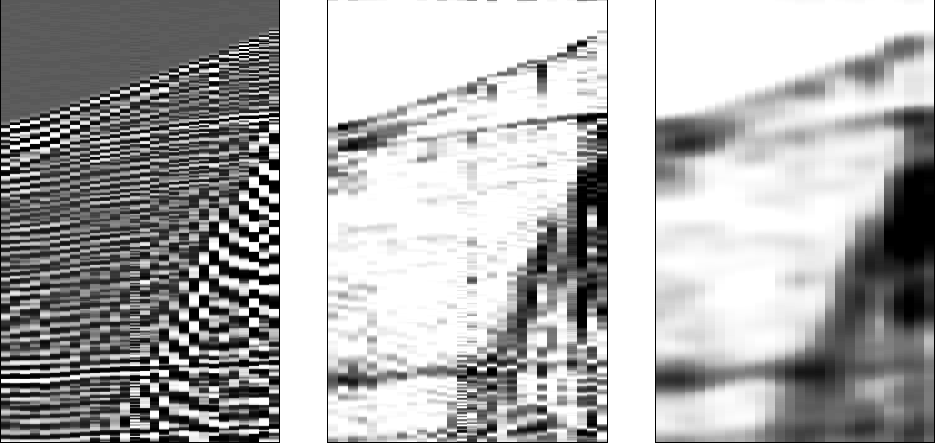is often used to make
the envelope of a signal.
The envelope signal can be defined by
![]() .Alternatively,
with the analytic signal
gt=ut+ivt,
the squared envelope is
.Alternatively,
with the analytic signal
gt=ut+ivt,
the squared envelope is ![]() .
.
A quick way to accomplish the ![]() phase-shift operation
is to use Fourier transformation.
Begin with
phase-shift operation
is to use Fourier transformation.
Begin with ![]() , and transform it to the frequency domain.
Then multiply by the step function.
Finally, inverse transform to get gt=ut+ivt,
which is equivalent to
, and transform it to the frequency domain.
Then multiply by the step function.
Finally, inverse transform to get gt=ut+ivt,
which is equivalent to ![]() .
.
 |
Sinusoids have smooth envelope functions, but that does not mean real seismograms do. Figure 4 gives an example of a field profile and unsmoothed and smoothed envelopes. Before smoothing, the stepout (alignment) of the reflections is quite clear. In the practical world, alignment is considered to be a manifestation of phase. An envelope should be a smooth function, such as might be used to scale data without altering its phase. Hence the reason for smoothing the envelope.
If you are interested in wave propagation,
you might recognize the possibility
of using analytic signals.
Energy stored as potential energy is ![]() out of phase
with kinetic energy, so ut might represent scaled pressure
while vt represents scaled velocity.
Then
out of phase
with kinetic energy, so ut might represent scaled pressure
while vt represents scaled velocity.
Then ![]() is the instantaneous energy.
(The scales are the square root of compressibility
and the square root of density.)
is the instantaneous energy.
(The scales are the square root of compressibility
and the square root of density.)